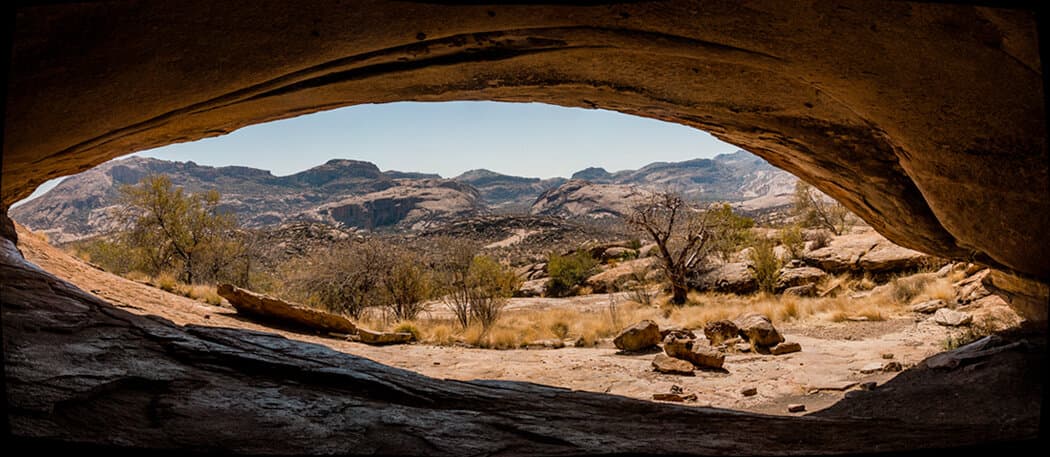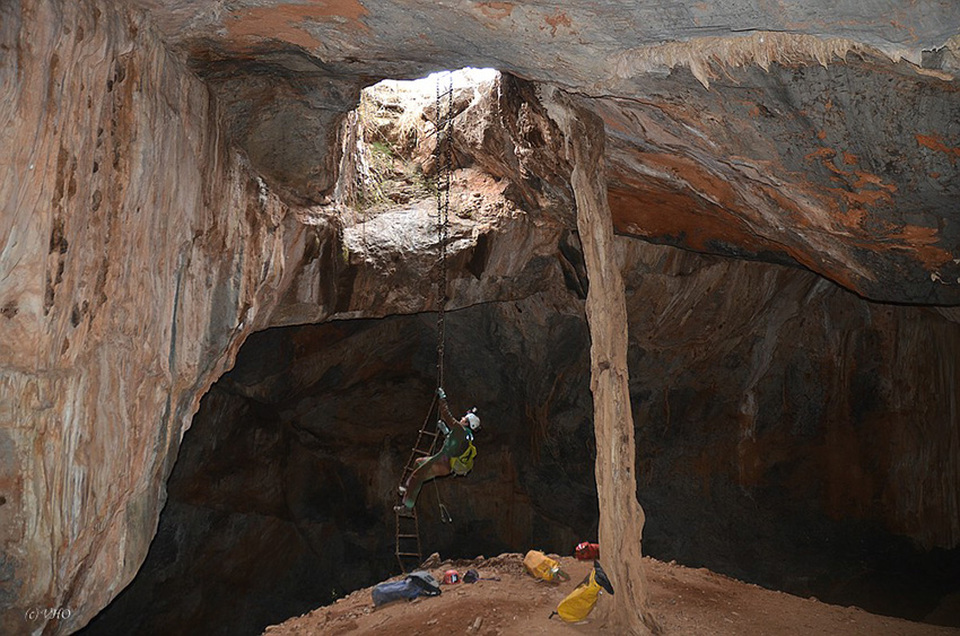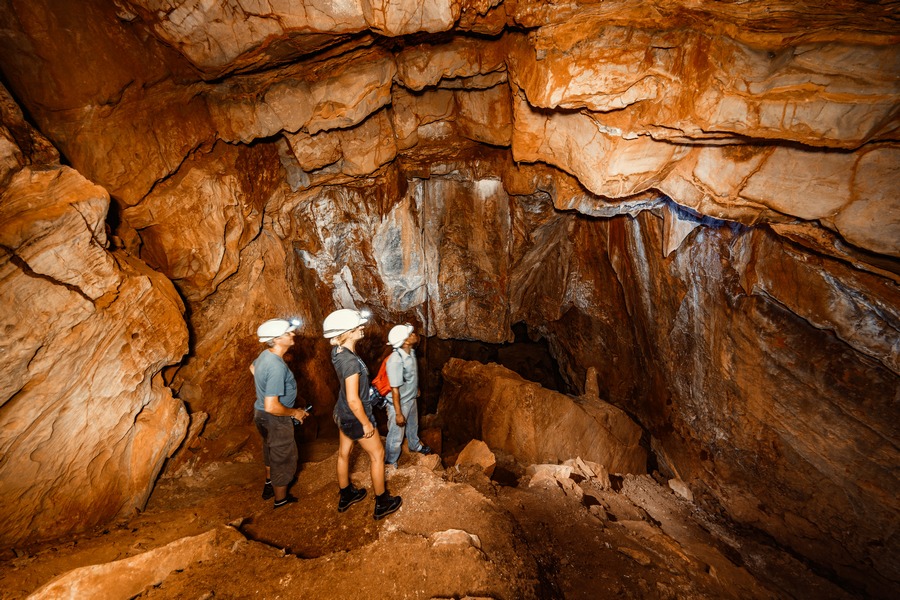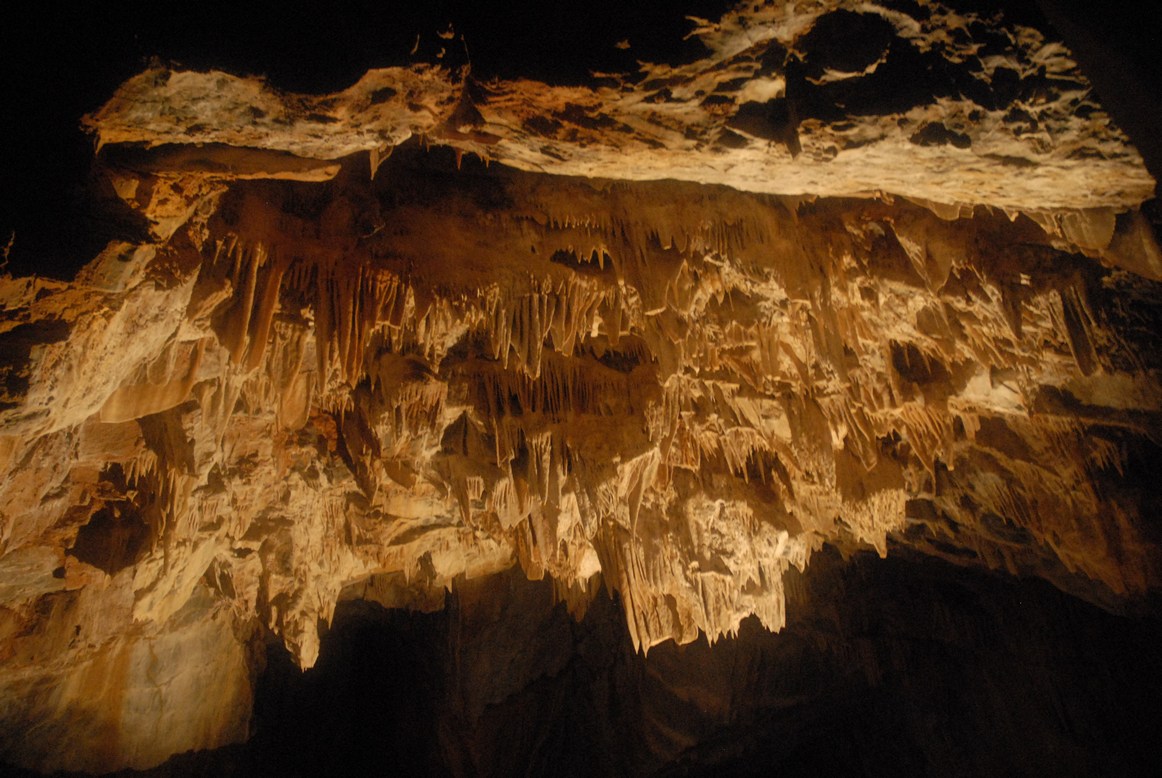 |
 |
Caves in Namibian History
Caves often fascinate people of all cultures, and the history of Namibian caving reflects that interest. Where caves are common, the locations are generally known to the immediate residents of the area. In Namibia, caves often feature in the folklore of Namibians - not only in indigenous tribes, but also in the folklore of later settlers. Many of the early travellers and explorers in Namibia visited and reported caves known to the local people, e.g. the first observations on local caves were published in 1864, and notes on geology and other speleological analyses appeared as early as 1920. Many of the later cave "discoveries" were also based on reports by people living in the vicinity of caves. The Namibian caves are, however, not noted for particular beauty, and much of the local interest in caves were for practical reasons or curiosity rather than aesthetic.
 |
 |
At present,
prehistorical information about Namibian caves is sketchy. A common, but mistaken belief,
is that indigenous people, e.g. bushmen, used caves for shelter. This belief stems mainly
from the archaeological literature, where rock-shelters are often referred to as
"caves". Indigenous peoples were not averse to using caves to shelter or hide
in, but that usually only happened where a cave was accessible, allowed observation over
approaches and the surrounding area, and provided room at the entrance to shelter in. Most
of the Namibian caves have vertical entrances and are situated on top of elevations, and
thus are unsuitable as practical shelters. Utilising resources associated with caves was
more common, e.g. water, bird's eggs, honey, etc. Although caves feature in indigenous
folklore and superstitions, local people did not attach the same deep spiritual
connotations to caves as recorded in other parts of the world. The indigenous knowledge of
caves, particularly for utilising cave resources, was later tapped by new arrivals to
Namibia.
The occupation troops of the German colonial administration (1882-1915) had a
particular interest in caves, since caves in certain remote areas often contained the only
reliable water supplies for transport animals (horses and oxen).
Caves with accessible pools were used as watering points by both police patrols and guerrilla bands resisting the occupation, and were recorded on topographical maps of that period. Some accurate cave descriptions and even cave maps dating from that period can be found in the local archives. The precise locations of many of these caves were subsequently lost as new routes, transport systems, and water sources were developed, though the general area can often be surmised from early topographical maps. In some notable cases, caves with water reservoirs remained of interest, and some are utilised to this day.
At a later stage, caves became important to landowners. During WW1 and WW2, nitrate supplies in countries and territories comprising the British Empire were regarded as a strategic resource. Mineral nitrates were mainly reserved for manufacturing explosives and ammunition propellants, with the agricultural need for fertiliser subservient to that of war materials. In agriculture, mineral nitrates were replaced by organic fertilisers, e.g. seabird guano. Bird guano has been continuously harvested on the Namibian coast since the middle of the 18th century, though only a small quantity was utilised locally. Even so, that distribution was curtailed "… in the interest of the war effort". In response, Namibian farmers searched for caves and extracted bat guano for fertiliser, which was not subject to the same restrictions. More than 100 000 tonnes of bat guano was extracted from Arnhem Cave alone over the period 1932-1942, though smaller caves such as Nooitgedacht, Otgrot, Valle, and others, were also mined. Historical notes about particular caves can be found in more recent reports on Namibian caves.
 |
 |
Sportive and research interest in Namibian caves is much more recent. A local
interest group, the Hoehlenforschungsverein, was founded in 1963, and produced several
reports. Before discontinued in 1974, the Höhlenforschungsverein established contacts
with SASA and the UIS. The National Museum was also interested in caves since the 1960's,
though initially only for bat, fish, and possible historical and archaeological research.
In 1984 John Irish, then an entomologist at the National Museum of Namibia, initiated
structured speleological research to generate more information on the local cave fauna.
Irish was a catalyst for the 1986 visit of SASA, which resulted in the discovery of
Dragon's Breath cave and subsequent global interest in Namibian caves. Eugene Marais
joined the Museum in 1986 and started spelunking with Irish. An intensive program to
locate, map, and investigate Namibian cave environments, together with Jacques Martini,
was initiated in 1987.
The survey established the locations of as many caves as possible in Namibia. A
long list of potential caves was compiled by "armchair" caving (intensive
literature searches and examination of aerial photographs). That information was expanded
by searching likely localities and information provided by the public (farmers,
conservators, geologists, local inhabitants, etc.). During the same time, as many site
visits, cave surveys, and information gathering on biospeleology and mineralogy were
included to improve the knowledge base on Namibian caves. The survey also resulted in a
wider scientific interest in Namibian caves, which led to a local cave research group,
called SWAKNO (for South Western Africa Karst Research (=navorsings) Organization) being
formed in 1988. SWAKNO intended to facilitate research in the caves of south-western
Africa, and its members investigated caves in the Northern Cape of South Africa, Namibia,
Botswana, and Angola. An attempt to ensure publication of relevant information, and
perhaps longevity of the group, by affiliating SWAKNO to SASA, failed. The SWAKNO
confederation are disintegrating, though during its brief existence it established a
cave register, surveyed representative caves, and assembled a body of scientific information.
Some of these results are being published, but a considerable amount is only available in
manuscript form.
Interest from outside Namibia also contributed significantly to the knowledge about
local caves. Cavers and cave researchers from Australia, Austria, France, Germany, Italy,
South Africa, Spain, Switzerland, the USA, and the United Kingdom have visited and
generated valuable information and international exposure about Namibian caves. The first
caving group to visit Namibia was the South African Speleological Association (SASA) in
1967. SASA was invited by the local National Monuments Council to survey Ghaub cave, and
subsequently two caves (Ghaub and Ganachaams) were proclaimed as national monuments. SASA
groups subsequently visited Namibia on several occasions (1974, 1986, 1987, 1988, 1991,
1992), as well as caving groups from Germany (Verein fuer Hoehlenforschung Muenchen (VfM)
- 1991] and Austria (Verein fuer Hoehlenforschung Obersteiern - 1995, 1998). The
international contribution to Namibian cave science includes the large number of caves
recorded from near Otavi; most of the early discoveries of Namibian troglitic fauna; the
bulk of information on Namibian cave bats; and major cave discoveries such as Dragon's
Breath.
However, visitors often do not ensure that their results or reports are available
in Namibia, and valuable information may get irretrievably lost. For example, the
locations of most of the Otavi caves located by Uhlmann in 1963, and caves visited by SASA
in 1967 and 1974, including Ganachaams cave; are lost. In addition, neglecting to contact
local people result in lost opportunities, e.g. the many unproductive visits by cave
diving groups. Even worse, some visitors leave unwelcome evidence in caves, e.g. rubbish,
plaques, and other "Killroy was here" symbols. Caving visitors, whether sportive
or scientific, should try to liase before their visit, should report unusual finds to a
relevant authority, should try to leave a record of their activities and results in the
country they visited, and should honour the basic caving creed (leave nothing but
footprints, take nothing but photographs). Such fundamental courtesy benefits everybody.
Recent information on Namibian caves can be found in:
Arbeitsberichte der Hoehlenfurschungsverein 1-10, Windhoek (available through the Namibia Scientific Society)
Bulletin of the South African Speleological Association Cape Town
Cimbebasia Windhoek (journal of the National Museum of Namibia)
Journal of the Namibia (South West African) Scientific Society Windhoek
Madoqua Windhoek (journal of the Namibian Ministry of Environment)
Otavi '95 Report by Verein fuer Hoehlenforschung Obersteiern
Contact & information:
E-mail:
info@namibweb.com
Terms & conditions, Payment options and Cancellation policy
Related: Guide
for cave visitor, Namibia's cave register
Source: Eugene Marais. Namibian caving history.
Page created and serviced by

www.namibweb.com
Copyright © 1998-2025
namibweb.com - The online guide
to Namibia
All rights reserved |
JOIN
|
VIDEO PORTFOLIO
|
VIDEO/PHOTO COLLECTION
Telegram
| YouTube |
Blog
Page is sponsored by ETS &
Exploring Namibia TV
Disclaimer: no matter how often this page is updated and its accuracy is checked,
www.namibweb.com and ETS
will not be held
responsible for any change in opinion, information, facilities, services,
conditions, etc. offered by
establishment/operator/service/information provider or any third party